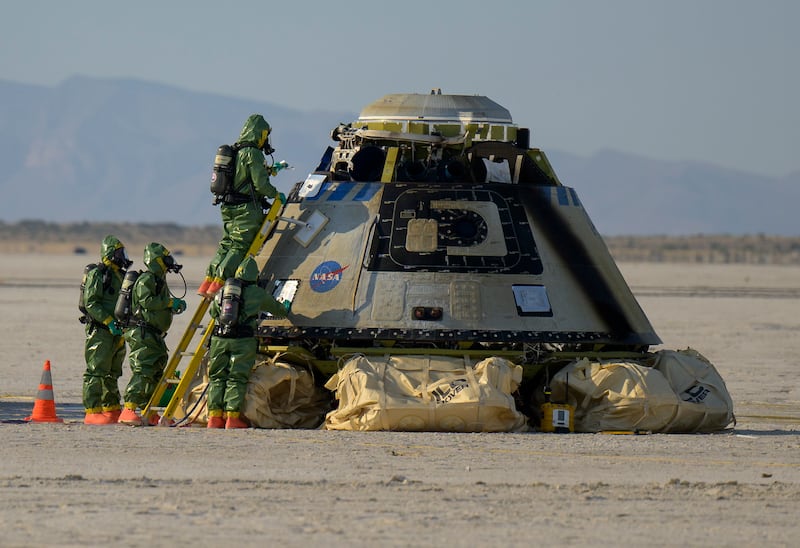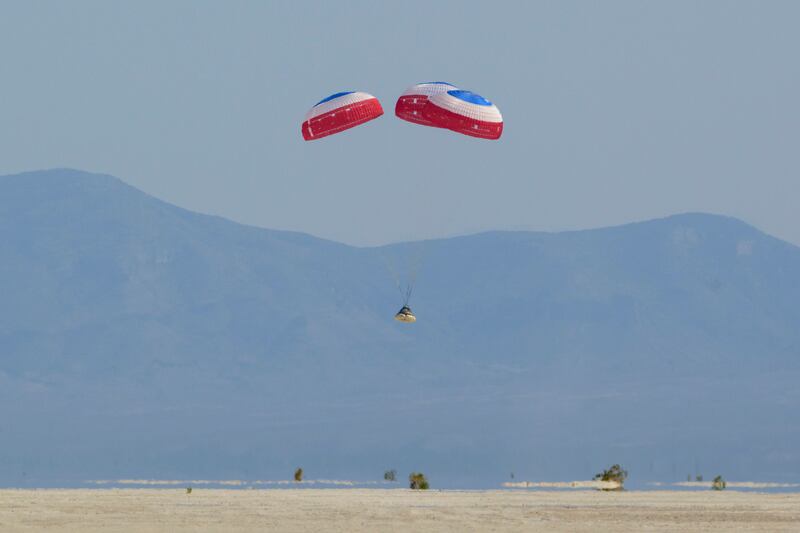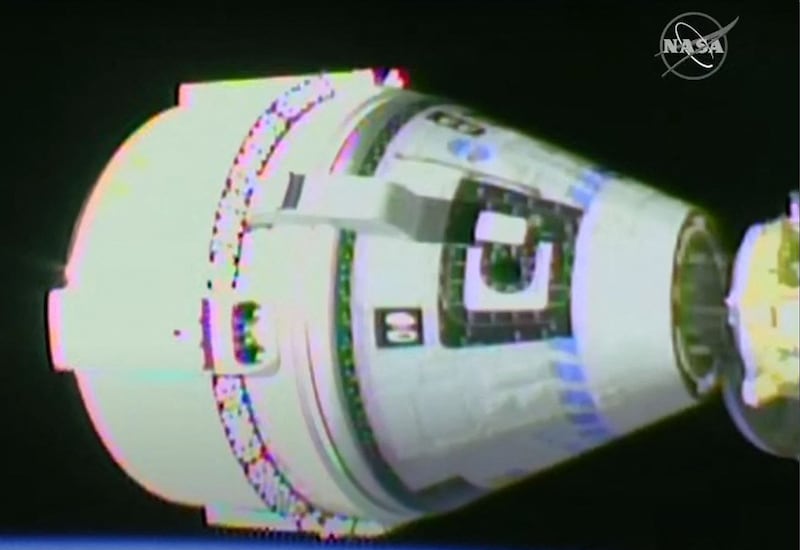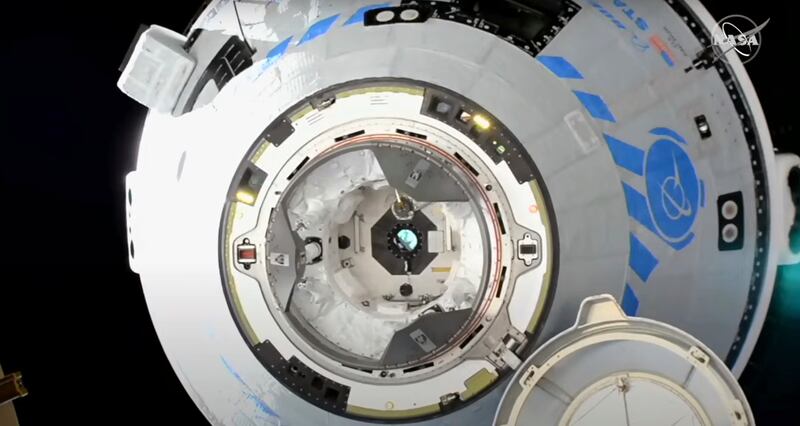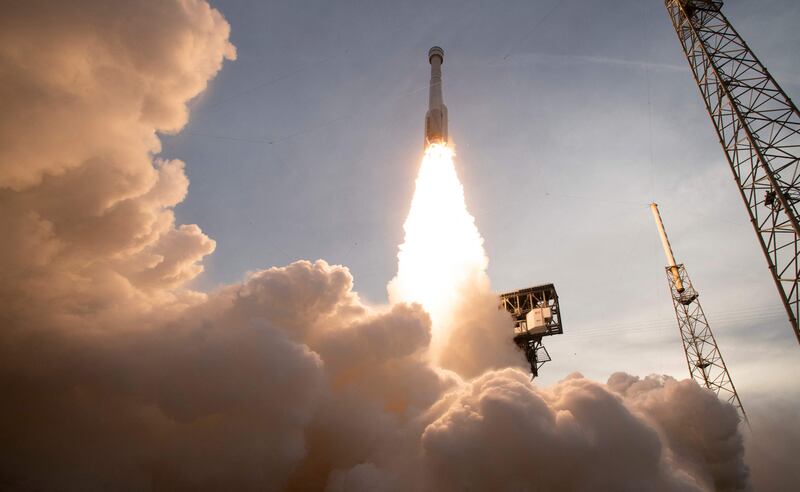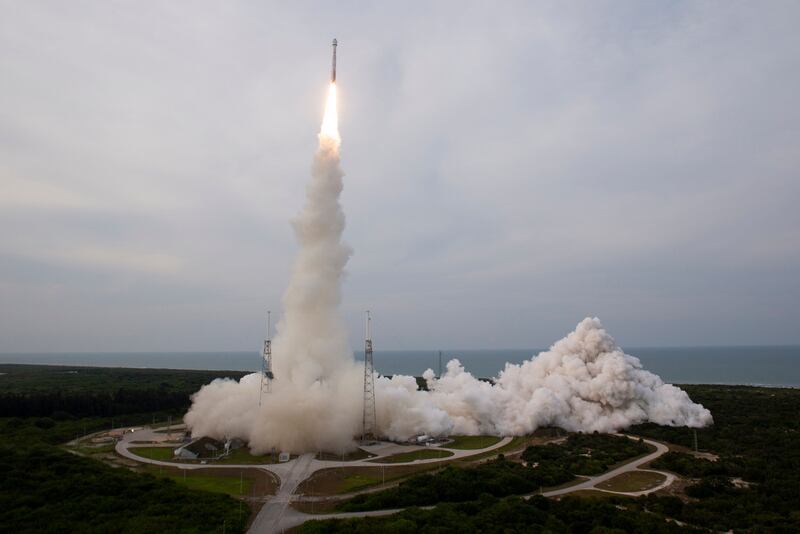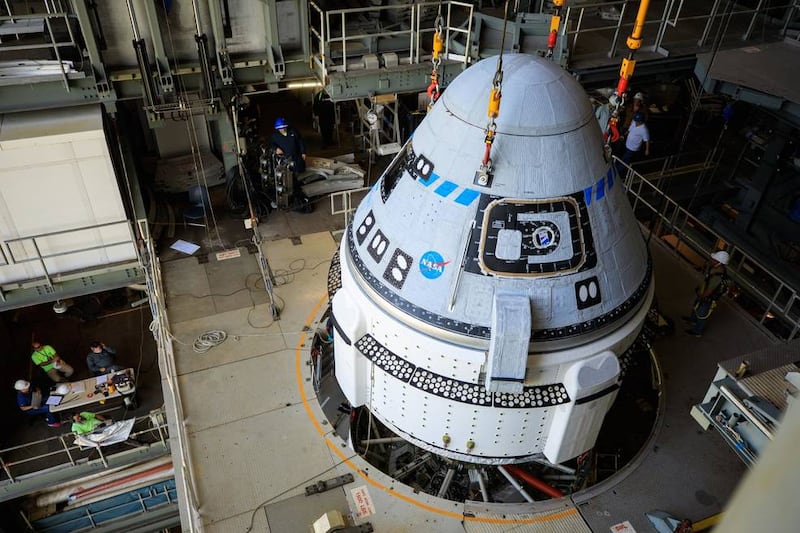Boeing’s Starliner capsule is preparing to land back on Earth after docking with the International Space Station.
The CST-100 Starliner launched on May 20 and docked with the station a day later.
It will land at the US Army’s White Sands Missile Range in New Mexico on May 26, at 2.49am UAE time.
With the successful completion of this test, Boeing could be set to send astronauts to space for Nasa by the end of this year.
The company is contracted by the US space agency to send its astronauts to the space station in a deal similar to Nasa’s arrangement with Elon Musk's SpaceX.
Even though docking was successful, there were minor issues during the flight, including two of the thrusters that help a spacecraft to manoeuvre shutting down prematurely after reaching orbit. The flight also experienced some software issues.
This was the company’s second flight test, after the first one in 2019 failed to dock with the orbiting laboratory because of software problems.
Astronauts on board the space station opened Starliner’s hatch on May 21 and moved inside, becoming the first people to enter a spacecraft while it is in orbit.
“This is a momentous day in Nasa’s history and just paving the way to the future as we start enabling commercial flights here in low Earth orbit, while Nasa pivots to the Moon and eventually on to Mars,” Nasa astronaut Bob Hines said.
The crew spent several days unloading cargo from Starliner and performing systems tests inside the spacecraft.
They closed the hatch on May 24 and will work with ground controllers on May 25 to allow Starliner to disconnect from the station and make its return flight to Earth.
“It’s been an honour to take part in this and be a tiny cog in the wheel that is the Commercial Crew Programme and the amazing teams, the operational teams, the design teams, that put this vehicle together,” said Mr Hines, who went to space as part of the Nasa-SpaceX Crew-4 mission, which will last for six months.
Nasa’s Commercial Crew Programme has helped to launch manned missions from US soil once again, after having to rely on Russia’s Soyuz rockets for more than a decade.
“It was really cool to be on this end of it and watch the culmination of those efforts and all of those activities," he said.
“We were really proud to receive it up here and we’re packing it up and getting ready to send it back to you.
“She’ll be in as good a shape as she was when she left. We promise.”
